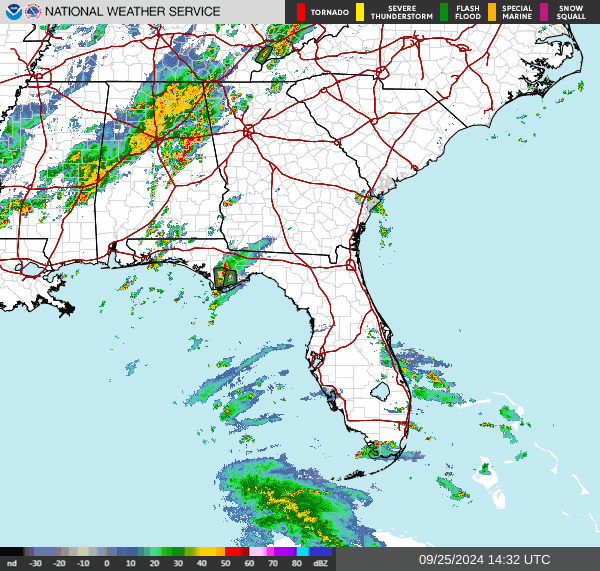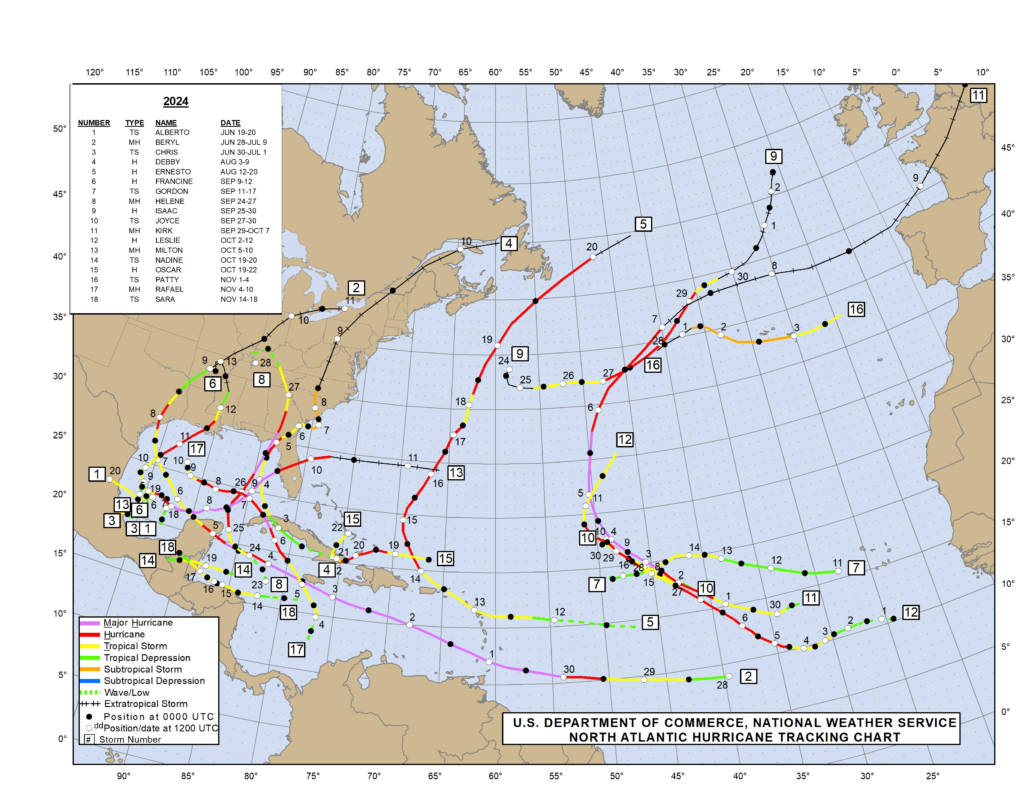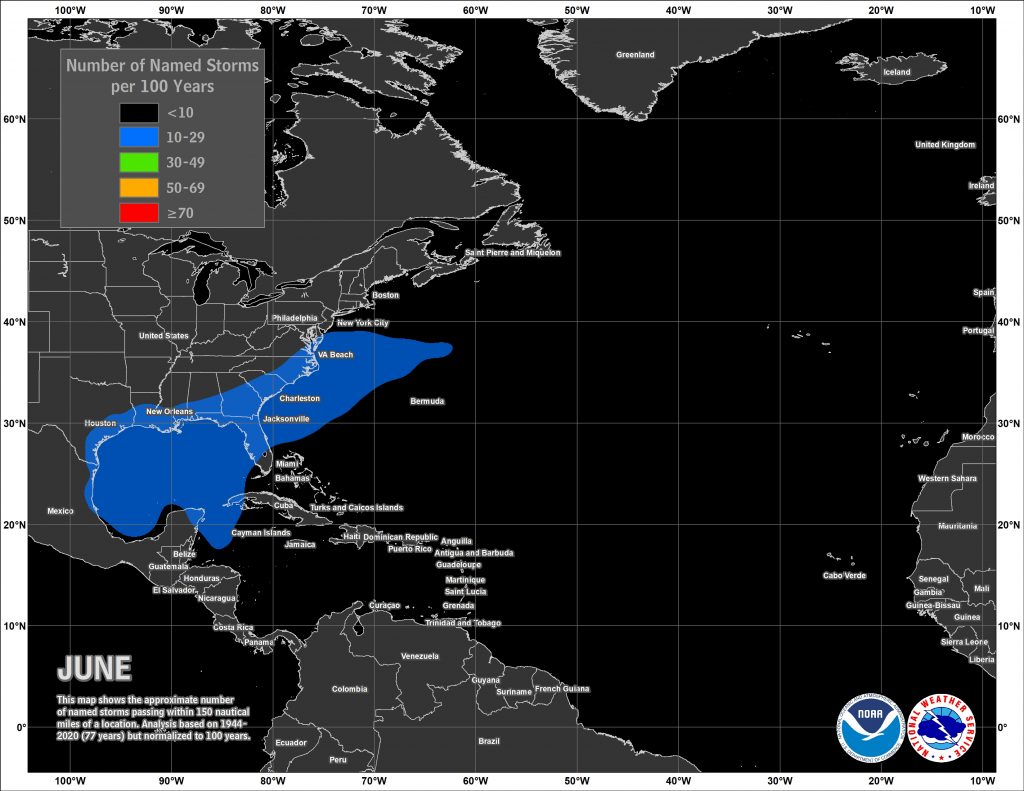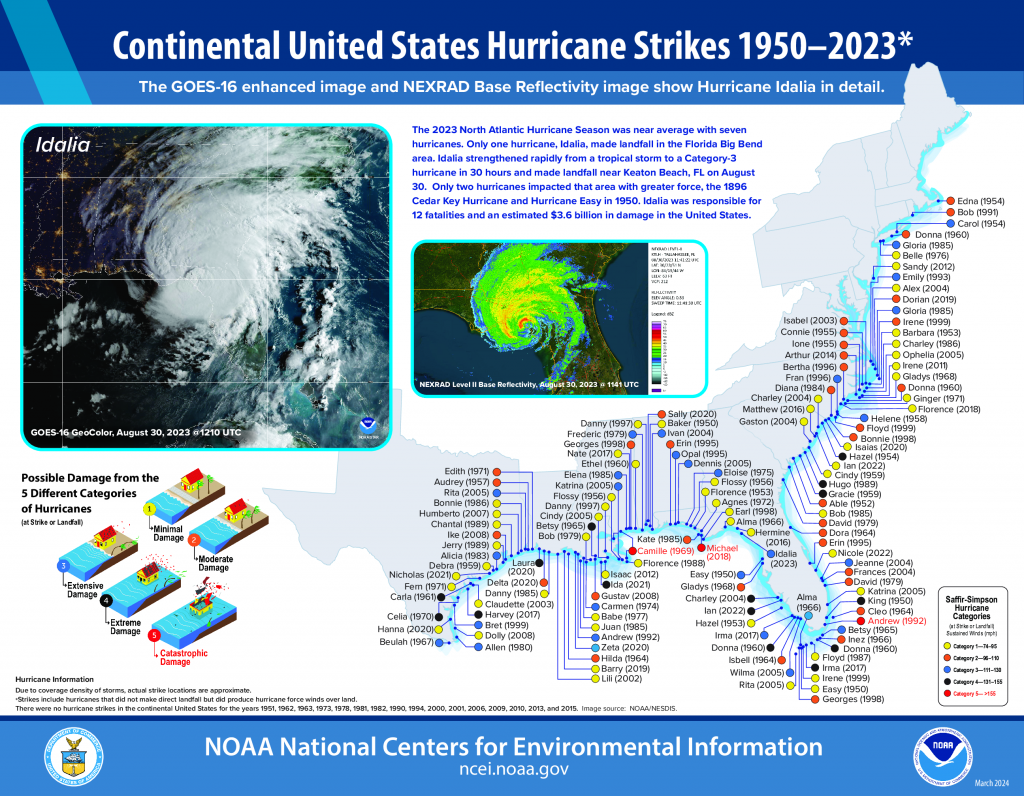Atlantic hurricane season officially starts on Sunday June 1st and runs through Sunday November 30th, and indications are that the season maybe off to an early and active start.

The 2024 season was an above normal season by the numbers, with 18 named storms, 11 hurricanes, and 5 major hurricanes. The season got off to a slower start than recent years, with only 3 storms through the beginning of August, and 5 through Labor Day, but 8 named storms formed in a 4 week span between September 9 and October 5. Hurricane Helene made the most headlines, hitting the Big Bend region of Florida area as a Category 4 hurricane on September 27, producing catastrophic wind damage and flooding in parts of the Carolinas.

Hurricane Milton was the strongest storm of the season, reaching Category 5 intensity. The estimated minimum pressure in the storm of 895mb tied it with 2005’s Hurricane Rita for the 4th lowest pressure in the Atlantic Basin. Milton made landfall near Siesta Key, Florida on October 9 as a Category 3 hurricane. The other storms to make landfall in the US were Hurricane Beryl in central Texas on July 8, Hurricane Debby which hit the Florida Big Bend on August 5, and Hurricane Francine, which hit Louisiana on September 11. The 5 US hurricane landfalls is the most since 2020, when 6 hurricanes struck the United States. That year also featured 2 major hurricane landfalls, just like 2024. In 2021, a total of 8 tropical systems made landfall in the United States, but only 2 at hurricane strength.

Forecasts for the upcoming season are for an active season with between 14-19 named storms, several of which are expected to be hurricanes. Sea surface temperatures aren’t quite as high as this time last year, with cooler than normal temperatures being seen across the far eastern Atlantic, which should restrict any development off the coast of Africa until much later in the season. However, sea surface temperatures are warmer than normal across the Caribbean as well as in the Gulf, and this could lead to an early start to the season with systems developing close to the Caribbean, central America, Florida and the Gulf Coast. As we get deeper into the season, developing activity should start in portions of the central and eastern Atlantic. This will be helped by less in the way of solar activity this summer than last summer, which helped diminish the development of tropical waves in the far eastern and central Atlantic. There is no expected enhancement or decrease in tropical activity this summer due to ENSO which is forecast to be in a neutral phase. El Nino conditions usually decrease tropical activity in the Atlantic and La Nina usually helps enhance tropical activity.

The Tropical Meteorology Project at Colorado State, the first group to forecast how active a hurricane season would be, originally led by the late Dr. Bill Gray, will issue their updated forecast on June 11. Their initial forecast from April called for an above average season, with 17 named storms, 9 hurricanes, and 4 major hurricanes. NOAA released their forecast on May 22, and it calls for a 60% chance for above normal activity this season, with 13-19 named storms, 6-10 hurricanes, and 3-5 major hurricanes. Overall, 8 of the past 9 hurricane seasons have featured above normal activity across the Atlantic.

Despite the early start for the many of the past several years, the average date for the first named storm in the Atlantic is still June 20, and the average date for the first hurricane is August 11. Over 97% of all named storms in the Atlantic form between June 1 and November 30. Most early season storms tend to be on the weaker side. A hurricane hasn’t made landfall in the United States before July 1 since Hurricane Bonnie came ashore as a minimal hurricane near the Texas/Louisiana border on June 26, 1986.

The number of storms that form in any given season has no correlation on how many storms (if any) will impact the United States. In 2010, 19 named storms were observed in the Atlantic, 12 of them became hurricanes, and 5 were major hurricanes. Only one storm made landfall in the United States, and that was Bonnie, which was a minimal tropical storm at landfall. In 1990, there were a total 14 named storms, 8 of them hurricanes and 1 major hurricane. Not a single one of them made landfall in the United States. On the flip side, only 7 named storms formed in 1992, and the first one didn’t develop until August 16. That storm, however, was named Andrew, and it made landfall just south of Miami as a category 5 storm. It only takes one storm to ruin your entire year.

As always, you should get your weather information from trusted and reliable sources such as the National Hurricane Center during the tropical season.